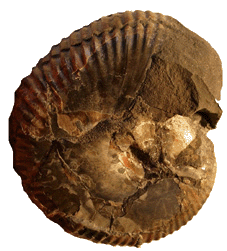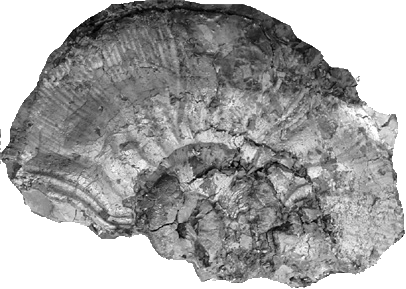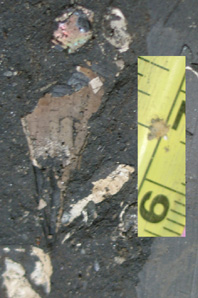|
Callovian/Oxfordian
boundary beds of the Russian Platform (in join with Dr. D.N. Kiselev)
Now we have prepared for publication
monograph concerning ammonite faunas and biostratigraphy of the Middle
Callovian ¢ lowermost Lower Oxfordian of the
Russia
. Summary of the
ammonite faunal horizons were represented as a poster on the 32nd
Geological Congress [see publicationÆs list]. Additional excavations
undertaken during the summer of 2004 shows possibility of the more
precise determination of the faunal horizons both new (as mojarowskii
horizon) and earlier known from the Western Europe. We try to compose
parallel scales of the horizons based on the development of the
different phylogenetic lineages (most important are lineages of
Subboreal kosmoceratids and Boreal cardioceratids).
Oceanic
ammonoids of the northern
Siberia
from the Jurassic/Cretaceous boundary beds (in join with A.A.
IgolÆnikov)
So-called oceanic ammonoids (phylloceratids,
lytoceratids and Bochianites) are the little-known fossils from the Upper Jurassic
¢ lowermost Cretaceous of the Arctic areas. There are few levels with
the numerous oceanic ammonoids (middle part of the Upper Volgian Okensis
Zone; sometimes Kochi Zone and uppermost Mesezhnikovi Zone of the
Ryazanian). Interpretation of these levels and events still remain
questionable. Due to resemblance of the Siberian ammonoids with Pacific
ones (Californian and Alascan species described by R.Imlay) we can make
preliminary conclusion about the good marine connection between
Arctic
and Pacific basins
during the time spans of the cephalopod migrations.

Boreiophylloceras sp. from the Ryazanian-Valanginian boundary
beds
of the
Paksa
Peninsula
(N.Siberia)
The
Volgian Stage of the Middle
Volga
area and adjacent regions (in join with Dr. D.N. Kiselev, Dr. O.S.
Dzyuba, Dr. E.M. Tesakova, Dr. G. Price)
Ammonite faunas of the Volgian Stage
now are under intensively investigation of me and Dr. Kiselev. Major
conclusions: 1.
Lower Volgian
succession of the
Volga
area consist from
the succession of the faunal horizons of good correlative potential with
both Boreal and Tethyan scales. Gradual changes within the Ilowaiskya
¢ Pseudovirgatites - Zaraiskites lineage denied the presence of
the gap between Lower and Middle Volgian. 2. Nikitini and Fulgens Zones
further may be subdivided on the some faunal horizons with assemblages
suggested gradual transition (and also absence of a remarkable gap)
between Middle and
Upper Volgian
. Our colleagues now
studied the systematics of the belemnite guards (Dr. O.S. Dzyuba),
ostracods (Dr. E.M. Tesakova) and analyze stable isotope composition of
the belemnite rostra (Dr. G. Price).
Tithonian
ammonites & biostratigraphy of the
Crimea
(in join with Dr. V.V. Arkadiev)
In spite of the numerous articles
with the lists of the Tithonian ammonites from
Crimea
were published at
the last decades, hitherto only few ammonoids were figured and described.
Zonal scheme of the Crimean Tithonian used recently during the
geological survey based on the partly incorrect ammonite determinations.
For example, both Lithacoceras
ulmense and Kossmatia
richteri points from
the ōHybonotum Zoneö of the
Baidar
Valley
. Complex tectonic
structure and scarcity of the ammonite records make difficulties for the
creation of the new ammonite scale. Now we are in the beginning of the
pathway for the studying of Crimean Tithonian.

Franconites
cf. vimineus (Schneid),
Lower Volgian
,
~
boundary of the Sokolovi and Pseudoscythica Zones, Gorodishchi section
Middle
Jurassic ¢ Lower Cretaceous Coleoids (excl. Belemnitida) from the
Russia
(in join with Dr.
V.A. Bizikov)
Non-belemnitid coleoids of the
Russia
now is one of the
least studied fossil groups among fossil Cephalopods. Our field &
office studies gave an abundant data concerning these fossils.
Macrofaunal remains include among others gladii of the Trachyteuthis
(Volgian) and Plesioteuthis (Aptian),
numerous phragmocones presumable of Acanthoteuthis
(occurred from
Lower Callovian
till Hauterivian in the area between
Moscow
and northern
Siberia
). Microfossil
remains comprise coleoid statoliths and microonychites of the Jurassic
age.

Acanthoteuthis
sp., Middle Volgian Panderi Zone,
presumably
regularis horizon of the Orlovka (Saratov
Volga area)
Ecostratigraphical
approach and changes in the molluscan communities during the latest
Kimmeridgian ¢ early Middle Volgian of the Central Russian Sea
Field works of the 2003 gave an
abundant data about the changes of the ammonite spectra as well as
ammonite/macrobenthos ratio in the some Kimmeridgian-Volgian section (Gorodishchi,
Khanskaya gora,
Lake
Elton
). Increase of the
amount of Tethyan ammonoids in the faunal associations, as a rule,
coincides with the common increase in a variety of mollusks (especially
cephalopods) and, most likely, corresponds to the moments of the sea
level rising. For macrofaunistic associations of the internal seas
typically absence of oceanic ammonoids (such as Phylloceratida and
Lytoceratida) and prevalence of benthonic organisms (ammonoids/macrobenthos
ratio usually fluctuate within 5-15%). On structure of the described
assemblages influence rendered first of all not in themselves eustatic
events, but presence / absence of the geographical barriers supervised
by regional tectonics. Significant influence on the ammonite
associations of the
Northern Eurasia
had global sea level
rising during the Middle Tithonian (latest Early Volgian neoburgense
hemera and ? Pectinatus Chron). At this time numerous Tethyan ammonoids
(mainly Anaspidoceras and Sutneria)
have penetrated into the
Central
Russian
Sea
(Neoburgense Event).
At the same time transgressive impulse, followed by the mass spread of
the Boreal Pectinatites
everywhere in
Siberia
,
fixed in the Arctic region.
|


